Algeria Australia Austria Belarus Bhutan Canada PR China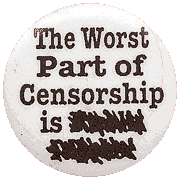 Cuba East Germany France Germany India Iran Italy Republic of Ireland Israel Japan Malaysia Myanmar Pakistan Poland Portugal Samoa Saudi Arabia Singapore South Asia North Korea Soviet Union Sweden Taiwan (R.O.C.) Thailand Tunisia Turkey United Kingdom United States Advertisements Anime Books Banned films Re-edited films Internet Music Video games MTV Book burning Bleep censor Content-control software Corporate censorship Under fascist regimes Pixelization Political censorship Postal censorship Prior restraint In religion Self-censorship Tape delay Whitewashing Censorship
Cuba East Germany France Germany India Iran Italy Republic of Ireland Israel Japan Malaysia Myanmar Pakistan Poland Portugal Samoa Saudi Arabia Singapore South Asia North Korea Soviet Union Sweden Taiwan (R.O.C.) Thailand Tunisia Turkey United Kingdom United States Advertisements Anime Books Banned films Re-edited films Internet Music Video games MTV Book burning Bleep censor Content-control software Corporate censorship Under fascist regimes Pixelization Political censorship Postal censorship Prior restraint In religion Self-censorship Tape delay Whitewashing Censorship is defined as the removal and/or withholding of information from the
public by a controlling group or body.
Typically censorship is done by
governments, religious groups or the
mass media, although other forms of censorship exist. The withholding of
official secrets, commercial secrets,
intellectual property, and privileged lawyer-client communication is not usually described as censorship when it remains within reasonable bounds. Because of this, the term "censorship" often carries with it a sense of untoward, inappropriate or repressive secrecy.
Censorship is closely related to the concepts of
freedom of speech and
freedom of expression. When overused, it is often associated with
human rights abuse,
dictatorship, and
repression.
The term "censorship" is often used as a pejorative term to signify a belief that a group controlling certain information is using this control improperly or for its own benefit, or preventing others from accessing information that should be made readily accessible (often so that conclusions drawn can be verified).
Aspects of censorship The rationale for censorship is different for various types of data censored. There are five main types:
Moral censorship is the means by which any material that contains what the censor deems to be of questionable morality is removed. The censoring body disapproves of what it deems to be the values behind the material and limits access to it.
Pornography, for example, is often censored under this rationale. In another example, graphic violence resulted in the censorship of the 1932 "
culturally, historically, or aesthetically significant" movie entitled "
Scarface" originally completed in 1930.
Military censorship is the process of keeping
military intelligence and
tactics confidential and away from the enemy. This is used to counter
espionage, which is the process of gleaning military information. Additionally, military censorship may involve a restriction on information or media coverage that can be released to the public such as in Iraq, where the U.S. government restricts the photographing or filming of dead soldiers or their caskets and its subsequent broadcast in the U.S. This is done to avoid public reaction similar to that which occurred during the
Vietnam War or the
Iran Hostage Crisis. This is also considered acceptable by even democratic governments as necessary for the preservation of national security.
Political censorship occurs when governments are holding back secret information from their citizens. The logic is to prevent the free expression needed to
revolt.
Democracies do not officially approve of political censorship but often endorse it privately. Any dissent against the government is thought to be a "weakness" for the enemy to exploit. Campaign tactics are also often kept secret: see the
Watergate scandal.
Religious censorship is the means by which any material objectionable to a certain faith is removed. This often involves a dominant religion forcing limitations on less dominant ones. Alternatively, one religion may shun the works of another when they believe the content is not appropriate for their faith.
Corporate censorship is the process by which editors in corporate media outlets intervene to halt the publishing of information that portrays their business or business partners in a negative light. Privately owned corporations in the
business of reporting the news also sometimes refuse to distribute information due to the potential loss of advertiser revenue or shareholder value which adverse publicity may bring. See
Media Bias.
By subject matter and agenda In wartime, explicit censorship is carried out with the intent of preventing the release of information that might be useful to an
enemy. Typically it involves keeping times or locations secret, or delaying the release of information (e.g., an operational objective) until it is of no possible use to enemy forces. The moral issues here are often seen as somewhat different, as release of tactical information usually presents a greater risk of casualties among one's own forces and could possibly lead to loss of the overall conflict. During
World War I letters written by British soldiers would have to go through censorship. This consisted of officers going through letters with a black marker and crossing out anything which might compromise operational secrecy before the letter was sent. The
World War II catchphrase "Loose lips sink ships" was used as a common justification to exercise official wartime censorship and encourage individual restraint when sharing potentially sensitive information.
A well-known example of sanitization policies comes from the
USSR under
Josef Stalin, where publicly used photographs were often altered to remove people whom Stalin had condemned to execution. Though past photographs may have been remembered or kept, this deliberate and systematic alteration to all of history in the public mntral themes of
Stalinism and
totalitarianism. More recently, the official exclusion of television crews from locales where coffins of military dead were in transit has been cited as a form of censorship. This particular example obviously represents an incomplete or failed form of censorship, as numerous photographs of these coffins are often printed in newspapers, magazines, and on the web.
Censorship of state secrets and prevention of attention The content of school textbooks is often the issue of debate, since their target audience is young people, and the term "whitewashing" is the one commonly used to refer to selective removal of critical or damaging evidence or comment. The
reporting of military atrocities in history is extremely controversial, as in the case of the
Nanking Massacre, the
Holocaust (or
Holocaust denial), and the
Winter Soldier Investigation of the
Vietnam War. The representation of every society's flaws or misconduct is typically downplayed in favor of a more nationalist, favorable or patriotic view.
Also, some religious groups have at times attempted to block the teaching of
evolution in schools, as evolutionary theory appears to contradict their
religious beliefs. The teaching of
sexual education in school and the inclusion of information about
sexual health and
contraceptive practices in school textbooks is another area where suppression of information occurs.
In the context of secondary-school education, the way facts and history are presented greatly influences the interpretation of contemporary thought, opinion and socialization. One argument for censoring the type of information disseminated is based on the inappropriate quality of such material for the young. The use of the "inappropriate" distinction is in itself controversial, as it can lead to a
slippery slope enforcing wider and more politically-motivated censorship. Some artists such as
Frank Zappa helped in the protest against censorship. Although they usually failed, they did put up an argument against the censorship of other material.
An example of such censorship is, ironically,
Fahrenheit 451. The book was themed against censorship, but changed heavily. The version that appeared in school English textbooks
Censorship of educational sources For more information, see the article on scientific misconduct. Scientific studies may be suppressed or falsified because they undermine sponsors' commercial, political or other interests or because they fail to support researchers' ideological goals. Examples include, failing to publish a study that show a new drug is harmful, or truthfully publishing the benefits of a treatment while failing to describe harmful side-effects.
Suppression/falsification of scientific research American musicians such as
Frank Zappa have repeatedly protested against censorship in music and pushed for more freedom of expression. In 1986, Zappa appeared on
CNN Crossfire to protest censorship of lyrics in rock music, saying that harm will be done or unrest caused if controversial information, lyrics, or other messages are promulgated.
In countries like Sudan, Afghanistan and China, violations of musician's rights to freedom of expression are commonplace. In the USA and Algeria, lobbying groups have succeeded in keeping popular music off the concert stage, and out of the media and retail. In ex-Yugoslavia musicians are often pawns in political dramas, and the possibility of free expression has been adversely affected.
Music censorship has been implemented by states, religions, educational systems, families, retailers and lobbying groups – and in most cases they violate international conventions of human rights.
Censorship in music and popular culture Copy approval is the right to read and amend an article, usually an interview, before publication. Many publications refuse to give copy approval but it is increasingly becoming common practice when dealing with publicity anxious celebrities.
Copy, picture, and writer approval Censorship is regarded among a majority of academics in the Western world as a typical feature of
dictatorships and other
authoritarian political systems. Democratic nations are represented, especially among Western government, academic and media commentators, as having somewhat less institutionalized censorship, and as instead promoting the importance of
freedom of speech. The former
Union of Soviet Socialist Republics maintained a particularly extensive program of state-imposed censorship. The main organ for official censorship in the
Soviet Union was the
Chief Agency for Protection of Military and State Secrets generally known as the
Glavlit, its Russian acronym. The
Glavlit handled censorship matters arising from domestic writings of just about any kind — even beer and vodka labels.
Glavlit censorship personnel were present in every large Soviet publishing house or newspaper; the agency employed some 70,000 censors to review information before it was disseminated by publishing houses, editorial offices, and broadcasting studios. No mass medium escaped
Glavlit's control. All press agencies and radio and television stations had
Glavlit representatives on their editorial staffs.
Some thinkers understand censorship to include other attempts to suppress points of view or the exploitation of negative
propaganda,
media manipulation,
spin,
disinformation or "
free speech zones." These methods tend to work by disseminating preferred information, by relegating open discourse to marginal forums, and by preventing other ideas from obtaining a receptive audience.
Sometimes, a specific and
unique information whose very existence is barely known to the public, is kept in a subtle, near-censorship situation, being regarded as "
subversive" or "inconvenient".
Michel Foucault's 1978 text
Sexual Morality and the Law, for instance - originally published as
La loi de la pudeur [literally, 'the law of decency'], defends the decriminalization of
statutory rape and the
abolition of age of consent laws, and as of July 2006, is almost totally invisible throughout the
Internet, both in English and French, and does not appear even on Foucault-specialized websites.
Suppression of access to the means of dissemination of ideas can function as a form of censorship. Such suppression has been alleged to arise from the policies of governmental bodies, such as the
FCC in the
United States of America, the
CRTC in
Canada, newspapers that refuse to run commentary the publisher disagrees with, lecture halls that refuse to rent themselves out to a particular speaker, and individuals who refuse to finance such a lecture. The omission of selected voices in the content of stories also serves to limit the spread of ideas, and is often called censorship. Such omission can result, for example, from persistent failure or refusal by media organizations to contact criminal defendants (relying solely on official sources for explanations of crime). Censorship has been alleged to occur in such media policies as blurring the boundaries between hard news and news commentary, and in the appointment of allegedly biased commentators, such as a
former government attorney, to serve as anchors of programs labeled as hard news but comprising primarily anti-criminal commentary.
The focusing of news stories to exclude questions that might be of interest to some audience segments, such as the avoidance of reporting cumulative casualty rates among citizens of a nation that is the target or site of a foreign war, is often described as a form of censorship. Favorable representation in news or information services of preferred products or services, such as reporting on leisure travel and comparative values of various machines instead of on leisure activities such as arts, crafts or gardening has been described by some as a means of censoring ideas about the latter in favor of the former.
Self-censorship: Imposed on the media in a free market by market/cultural forces rather than a censoring authority. This occurs when it is more profitable for the media to give a biased view. Examples would include near hysterical and scientifically untenable stances against
nuclear power,
genetic engineering and
recreational drugs distributed because scare stories sell. It also occurs when politicians/culture expect the media to give moral guidance - i.e., not publishing the cartoon depictions of Muhammed.
Informations about censorship: In many communist countries any information about existence of censorship and the legal basis of the censorship was censored. Rules of censoring were classified. Removed texts or phrases were not marked.
Creative censorship: In many communist countries censors not only removed texts but sometimes rewrote them, so some texts had secret co-authors.
Censorship implementation Censorship by country Main article: Censorship in the United States United States Google Earth censors places which may be of special security concern. The following is a selection of such concerns:
The former
Indian president APJ Abdul Kalam had expressed concern over the availability of
high-resolution pictures of sensitive locations in India.
Indian Space Research Organization says, Google Earth poses security threat to India and seeks dialogue with
Google officials.
The
South Korean government has expressed concern that the software offers images of the presidential palace and various military installations that could possibly be used by their hostile neighbor
North Korea.
In
2006, one user spotted a large
topographical replica in a remote region of
China. The model is purportedly a
small-scale (1/500) version of the
Karakoram Mountain Range, currently under the control of India. When later confirmed as a replica of this region, spectators began entertaining sinister military implications.
Operators of the Lucas Heights nuclear reactor in
Sydney,
Australia asked Google to censor high resolution pictures of the facility. However, they later withdrew the request.
The government of
Israel also expressed concern over the availability of high-resolution pictures of sensitive locations in its territory that was stolen from the Palestinians, and applied pressure to have Israeli territory (and the
Occupied Territories held by Israeli forces) appear in less clear detail.
Map Imagery Companies responsible for the access to the Internet in Brazil, such as Brasil Telecom and Telefonica, initially accepted the judicial order readily, and hindered access to the site with the offending videos. Due to the great displeasure regarding the decision in the community, authorities rescinded their order the following day, and Youtube.com was once again widely available to computer users in
Brazil.
Censorship in the
Internet - In 8 of January 2007, Brazilian authorities tried to censor the site
YouTube due to a video of scenes of sex between the model Daniela Cicarelli and her boyfriend Renato Malzoni, filmed by a paparazzo on a beach in
Spain.
Censorship around the world Banned books,
Banned films,
Censorship of music Corporate media,
Re-edited film Criticism of Wikipedia (Censorship section),
Video game controversy Censorship of media Advertising regulation,
Corporate censorship Censorship by organized religion,
Postal censorship,
Censorship under fascist regimes,
Internet censorship Other types of censorship Anthony Comstock (
Comstock Law),
Areopagitica: A speech of Mr John Milton for the liberty of unlicensed printing to the Parliament of England,
Autocensorship,
Bleep censor,
Book burning,
Book banning, the
Censored Eleven (banned
Looney Tunes and
Merrie Melodies cartoons),
Censorware,
Chilling effect,
Cindy's Torment,
Comics Code Authority,
Content-control software,
Death Whoop,
Edited movie,
Elsebeth Baumgartner,
Entertainment Software Rating Board,
Fahrenheit 451,
Freemuse - Freedom of Musical Expression,
Freedom of speech Gatekeeper (politics),
Graffiti Blasters,
Index Librorum Prohibitorum of The
Roman Catholic Church,
International Freedom of Expression eXchange,
Jack Thompson,
John Stuart Mill,
Lady Chatterley's Lover,
Leland Yee,
Media controversy,
Media transparency,
MPAA rating system,
NEA Four,
Network neutrality,
Nineteen Eighty-Four,
Police state,
Prior restraint,
Production Code,
Project Censored Scieno Sitter,
SourceWatch,
Standards & Practices,
Parents Television Council,
Super Bowl XXXVIII controversy,
Thomas Bowdler,
Tunisia Monitoring Group,
TV Parental Guidelines,
V-chip,
Mary Whitehouse,
Whitewashing,
Obscurantism Citations and notes (Arguing that an English teacher should get advice from school librarians in preparing to encounter three levels of censorship:
Abbott, Randy. "A Critical Analysis of the Library-Related Literature Concerning Censorship in Public Libraries and Public School Libraries in the United States During the 1980s." Project for degree of Education Specialist, University of South Florida, December 1987.
ED 308 864 Burress, Lee.
Battle of the Books. Metuchen, NJ: The Scarecrow Press, 1989.
ED 308 508 Butler, Judith, "Excitable Speech: A Politics of the Performative" (1997)
Foucault, Michel, edited by Lawrence D. Kritzman.
Philosophy, Culture: interviews and other writings 1977-1984 (New York/London: 1988, Routledge,
ISBN 0-415-90082-4) [[The text
Sexual Morality and the Law is Chapter 16 of the book]]
O'Reilly, Robert C. and Larry Parker. "Censorship or Curriculum Modification?" Paper presented at a School Boards Association, 1982, 14 p.
ED 226 432 Hansen, Terry.
The Missing Times: News media complicity in the UFO cover-up, 2000.
ISBN 0-7388-3612-5 Hendrikson, Leslie. "Library Censorship: ERIC Digest No. 23." ERIC Clearinghouse for Social Studies/Social Science Education, Boulder, Colorado, November 1985.
ED 264 165 Hoffman, Frank. "Intellectual Freedom and Censorship." Metuchen, NJ: The Scarecrow Press, 1989.
ED 307 652 Marek, Kate. "Schoolbook Censorship USA." June 1987.
ED 300 018 National Coalition against Censorship (NCAC). "Books on Trial: A Survey of Recent Cases." January 1985.
ED 258 597 Small, Robert C., Jr. "Preparing the New English Teacher to Deal with Censorship, or Will I Have to Face it Alone?" Annual Meeting of the National Council of Teachers of English, 1987, 16 p.
Rejection of adolescent fiction and popular teen magazines as having low value,
Experienced colleagues discouraging "difficult" lesson plans,
Outside interest groups limiting students' exposure.
ED 289 172)
Terry, John David II. "Censorship: Post Pico." In "School Law Update, 1986," edited by Thomas N. Jones and Darel P. Semler.
ED 272 994 [1] Supreme Court rejects advocates' plea to preserve useful formats
World Book Encyclopedia, volume 3 (C-Ch), pages 345, 346


 Printer's Row
Printer's Row South Loop
South Loop
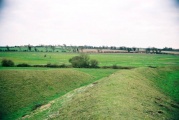 Roman control
Roman control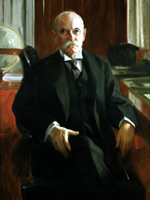

 "Counter-Reformation" or "Catholic Reformation"
"Counter-Reformation" or "Catholic Reformation" -
- Natural resources
Natural resources
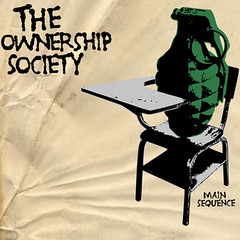 History
History
 Military importance
Military importance
 Pay Per Click advertising
Pay Per Click advertising 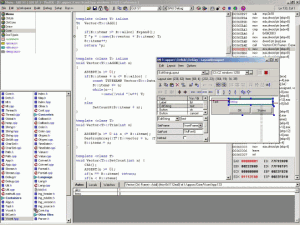 Structure and features of Ultimate++ TheIDE
Structure and features of Ultimate++ TheIDE